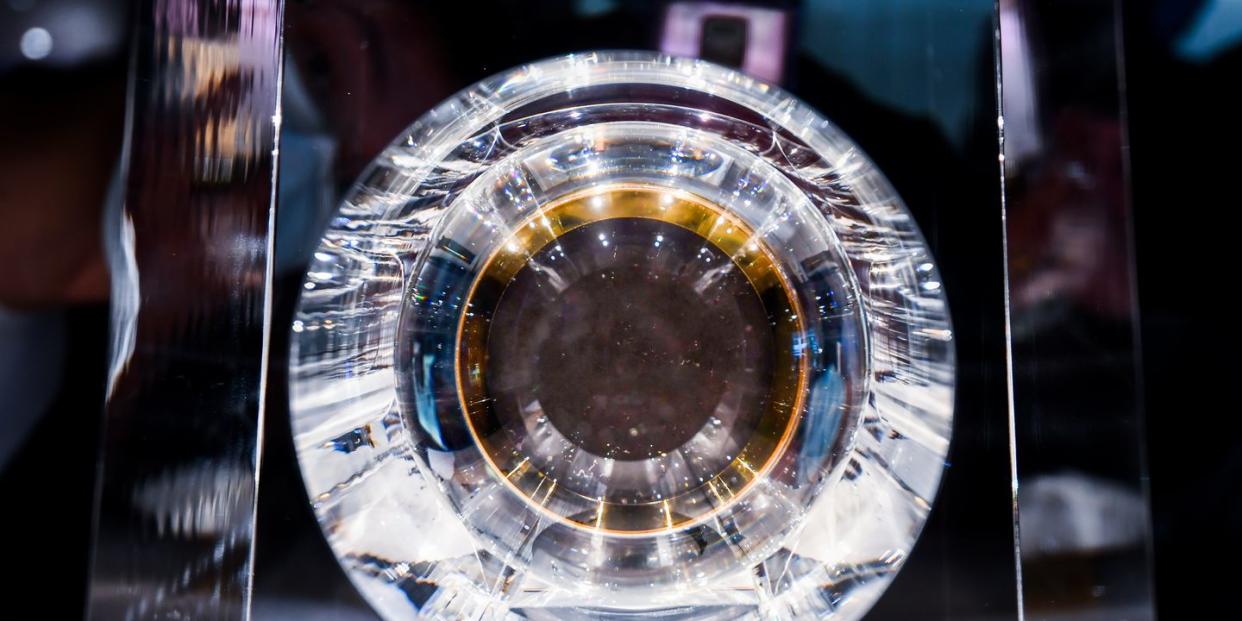China Plans Three Moon-Mining Missions After Finding a Potential New Source of Energy

A 2020 mission brought back minerals to China, leading to the discovery of a phosphate mineral now named Changesite-(Y).
Earth-found phosphate helps plants grow, but the moon mineral’s columnar crystal properties aren’t yet known.
China’s three new missions to the moon are planned over the next 10 years.
China’s so excited about a new mineral it found on the moon that it’s not wasting any time. The country's National Space Administration plans to deploy three moon orbiters in the next 10 years to potentially mine more of this lunar mineral.
🌘 You love our solar system. So do we. Let’s nerd out over it together—join Pop Mech Pro.
China’s Chang’e-5 mission in 2020 brought back what the country’s scientists have announced as a new phosphate mineral in columnar crystal, dubbed Changesite-(Y). The mineral contains helium-3, which offers a potential future energy source. It appears China wants to explore this connection further, both with the announcement of three new orbital trips and the Bloomberg report that China hopes to build a moon-based international research station.
Discovering new minerals from the moon isn’t unheard of, but it isn’t common. The United States and Russia (as the Soviet Union) combined have discovered five novel minerals, but China’s addition to the group is the most recent. Separated from rock and soil samples and then analyzed at the Beijing Research Institute of Uranium Geology, the Changesite-(Y) is unlike anything found on Earth.
The phosphate, which on Earth is key for plant growth, has columnar crystal formations with unknown properties. Finding phosphate on the moon, where the mineral prospers, was not surprising, but the columnar crystal form was new to scientists. The discovery of this form of phosphate could have ramifications for future moon-based farming. The mineral also contains helium-3, which has previously been identified as a possible future energy source, an intriguing prospect for scientists.
China is upping its moon-mining efforts; the next mission, the Chang’e-7, will reportedly focus on the search for water near the moon’s South Pole. It seems the search for more minerals could happen alongside the effort to discover the benefits of Changesite-(Y).
In recent decades, China’s space-related plans have ramped up exponentially. Along with the Chang’e-5 mission that returned to China in late 2020, the nation has built a space station and also landed its rover Zhurong on Mars in 2021.
These space efforts are not happening in conjunction with the United States but constitute another space race for the Americans. The two countries have sparred verbally over their national intentions, and the recent, seemingly successful efforts by the Chinese puts NASA’s upcoming but delayed Artemis missions in a more direct spotlight.
You Might Also Like
